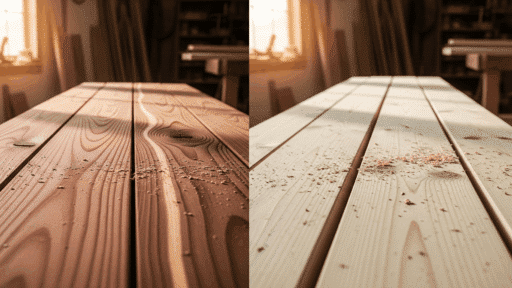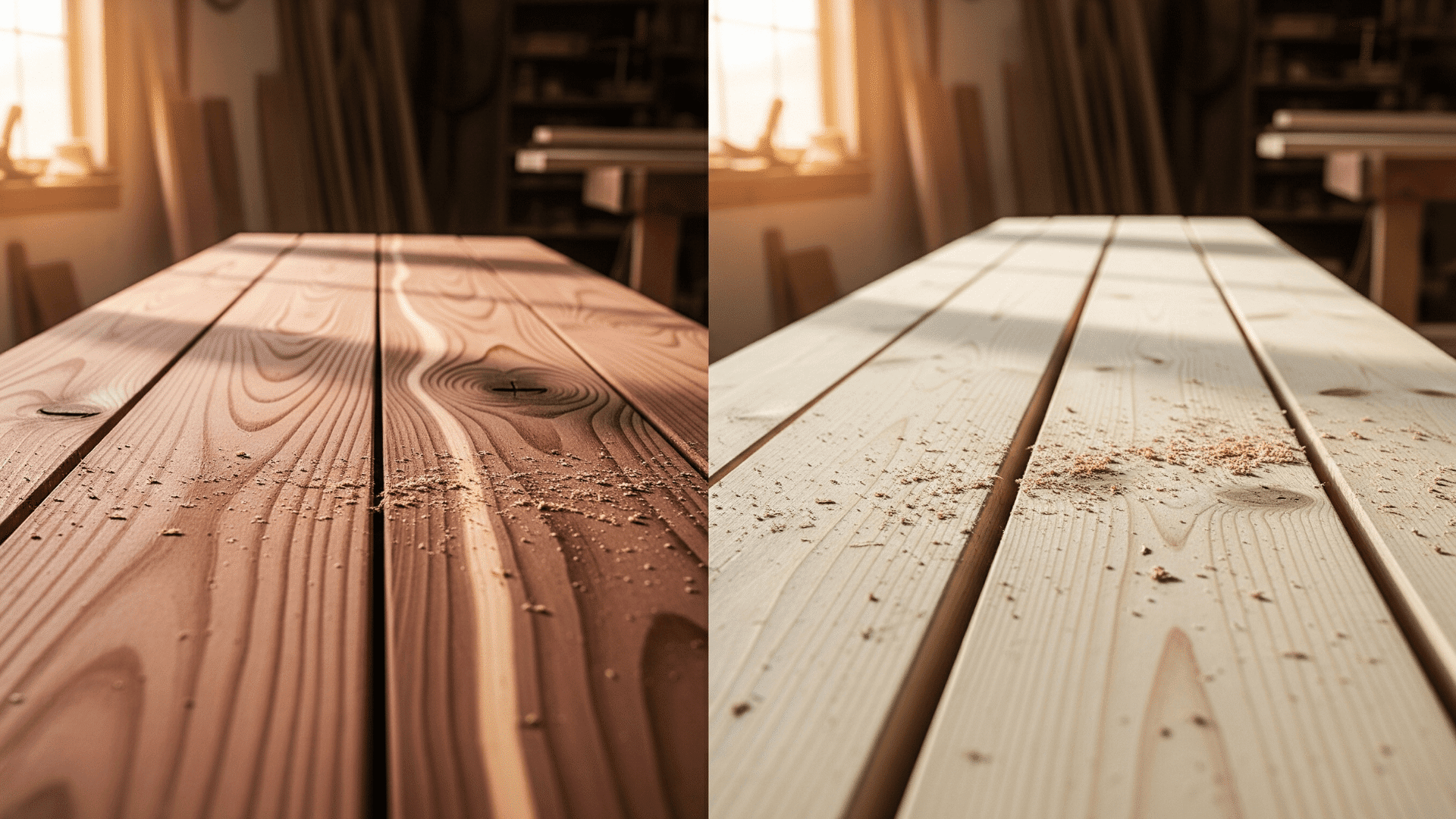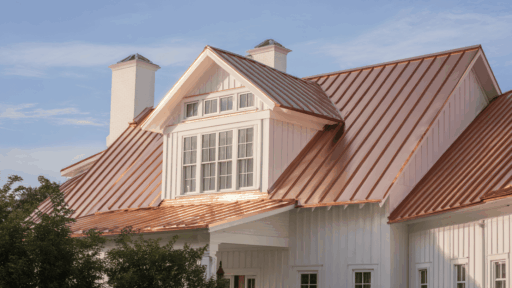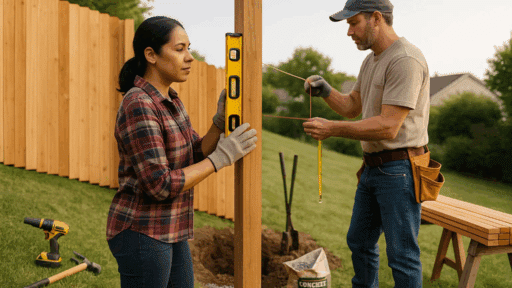Are you planning a new woodworking project and wondering whether cedar or pine is the better choice? It’s a common question, and the answer depends on your needs, budget, and where the wood will be used.
Both cedar and pine are popular softwoods, but they each have their own strengths and trade-offs.
If you’re building a fence, furniture, or something for the backyard, choosing the right wood can save you time, money, and frustration.
This guide breaks down everything you need to know in simple terms, so you can confidently decide which wood is the perfect fit for your project.
Understanding Cedar and Pine: Key Differences
Cedar and pine both come from conifer trees, but they differ significantly in their appearance, scent, and performance.
Cedar has a rich reddish brown color and gives off a pleasant woodsy scent. It is naturally resistant to bugs, moisture, and rot, which makes it a wise choice for outdoor use, such as fences, decks, and siding.
Pine, on the other hand, is lighter in color, usually pale yellow or cream, and does not have a strong scent. It grows quickly, making it more affordable, and is often used indoors or in painted furniture.
Pine needs to be treated before it can handle outdoor conditions. Knowing these traits helps you choose the right wood with confidence.
Durability Comparison: Cedar and Pine
Durability matters when picking wood, especially for outdoor use. You don’t want it falling apart after a few seasons. Here’s a clear comparison of cedar and pine when it comes to durability.
| FEATURE | CEDAR | PINE |
|---|---|---|
| Lifespan | Lasts long even in harsh weather | Shorter unless properly treated |
| Chemical Treatment | Not needed | Required for outdoor use |
| Bug and Rot Resistance | Naturally resists insects and fungus | Can rot and attract bugs if untreated |
| Strength and Hardness | Strong and dent-resistant | Softer and more prone to dents |
Cedar is a dependable option for harsh conditions, while pine can also work well if treated and maintained correctly.
Comparing Cedar and Pine Aesthetics
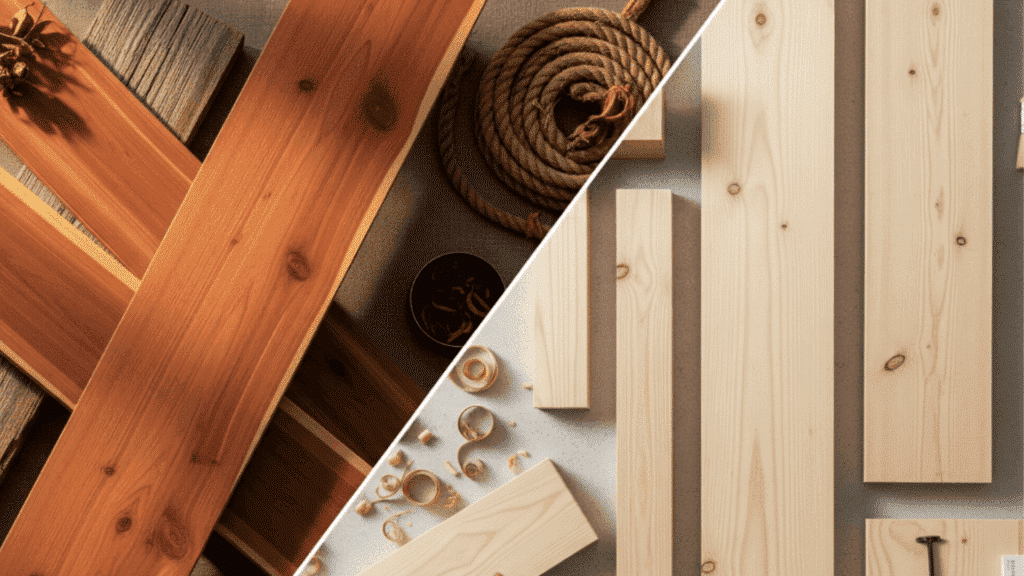
When picking wood for your project, how it looks can matter just as much as how well it holds up over time.
Cedar
Cedar has a warm, rich look that naturally draws attention. Its distinct grain and color give it a rugged charm many people want in outdoor or rustic designs.
- Reddish-brown tone that feels warm and earthy
- Bold, visible grain that adds firm visual texture
- Ages to a soft gray if left untreated
Pine
Pine has a lighter, more neutral appearance. It’s easy to work with if you’re planning to add color or prefer a smoother, cleaner finish.
- Pale cream to yellow tones that blend in easily
- Subtle, straight grain that looks clean and minimal
- Takes paint and stain very well for custom looks
The best choice depends on whether you prefer a natural, weathered look or want full control over color through staining or painting.
Choosing the Eco-Friendly Option
If you’re mindful of your environmental impact, the type of wood you choose can make a big difference.
Pine grows quickly, making it a highly renewable resource, but it’s often pressure-treated with chemicals to boost its durability.
These treatments can be harmful to soil, water, and surrounding plants, especially in garden or outdoor settings.
Cedar, on the other hand, is naturally durable and resists decay without the need for added chemicals. This makes it a cleaner, safer option for eco-sensitive areas.
While cedar trees grow more slowly and may take longer to replenish, their natural resistance reduces the need for sealants or reapplications over time.
For projects that prioritize low toxicity and long-term environmental care, cedar is the better choice.
Cost and Budget Comparison
Choosing between cedar and pine often comes down to your budget. While both woods have benefits, the upfront and long-term costs can make a big difference.
| FEATURE | CEDAR | PINE |
|---|---|---|
| Initial Cost | Higher upfront cost | Low initial cost |
| Maintenance Needs | Minimal upkeep required | Needs regular treatment |
| Long-Term Cost | Lower overall due to durability | Higher over time |
| Best For | Outdoor or long-term projects | Indoor or short-term use |
| Overall Value | Cost-effective in the long run | Budget-friendly short-term |
If you’re looking for a quick, affordable option, pine fits the bill. But if you want something that will last and save money down the road, cedar may be worth the extra investment.
Best Uses for Cedar and Pine Wood
Cedar and pine each have their strengths, making them ideal for different types of projects. Cedar is an excellent choice for outdoor use thanks to its natural resistance to rot and insects.
It works well for fences, gates, raised garden beds, decks, patios, outdoor furniture, and even siding or shingles.
Pine, on the other hand, is better suited for indoor applications. It is commonly used for making furniture, cabinets, trim, moldings, and shelves. It also performs well in painted wood projects and is often chosen for budget-friendly DIY tasks or temporary builds.
If you’re working outdoors and want durability, go with cedar. For indoor or paint-based work, pine is usually the better pick.
Maintenance Tips for Cedar and Pine
Proper maintenance helps extend the life and beauty of your wood. Following a few simple care tips will ensure your wood remains strong and attractive for years to come.
| WOOD TYPE | MAINTENANCE TIPS |
|---|---|
| Cedar | Clean with mild soap and water |
| Apply oil or sealer every few years | |
| Keep dry and remove nearby moisture-trapping plants | |
| Pine | Clean with a soft brush regularly |
| Reapply sealant every one to two years | |
| Check for rot or insect damage often |
Regular upkeep not only preserves appearance but also adds years to your wood’s life, saving you time and money down the line.
Final Thoughts
So, when it comes to cedar vs pine, which one wins?
If you want a beautiful, low-maintenance wood that lasts for decades outdoors, cedar is the better option. It costs more but makes up for it in durability and low upkeep.
If you need something affordable, especially for indoor use or paint-ready projects, pine is a solid pick. Just be ready for a little extra care over time.
Every project is different, and both woods have their place. Think about what matters most, cost, maintenance, or look, and you will make the right choice.
Also, consider how much exposure your project will face and how long you expect it to last. Making an informed decision now can save you repairs, replacements, and regrets later.
Frequently Asked Questions (FAQs)
Is Cedar More Expensive Than Pine?
Yes, cedar generally comes with a higher upfront cost. However, its natural durability and low maintenance often result in long-term savings.
Can Pine Be Used Outside?
Yes, pine can be used outdoors, but only when pressure-treated. Untreated pine is prone to rot and insect damage in outdoor environments.
Does Cedar Need to Be Sealed?
Sealing cedar is optional, thanks to its natural resistance to moisture and pests. Still, applying a sealant can help preserve its rich color and extend its life.
Which Wood Is Better for Furniture?
Pine is great for indoor furniture due to its light weight, affordability, and smooth surface for painting. Cedar is preferred for outdoor furniture because of its resistance to weather and decay.

